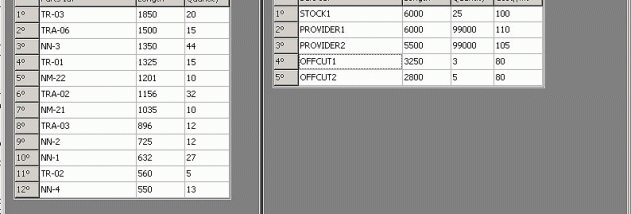

The following images demonstrate the option in an action:ġ.

If you used this option the results will be less optimized, since 1DCutX will try to reduce the cutting layout instead of the material waste. It’s referred sometimes as a batch cutting and allows cutting several stocks simultaneously Įffectively reduce the cutting operation by the number of stock in a batch. If you want to reduce the number of cutting operations then this option is for you. Minimize count of different cutting layouts It's helpful for cutting machines that take a saw kerf into account automatically. This option subtracts the saw kerf (saw width) from the location of the cuts. Reduce cut locations by saw kerf (for some cutting machines) However, if you need to cut all parts then you should check this box on. In that case you can check off this box and 1DCutX will use all stock and as much as possible parts, but not all of the parts. You have to cut 100 parts of length 50 and 40, but you have only 5 stocks of length 160. These parameters specify how much stock will be trim out from the beginning and end of the stocks.įor some projects you could have more parts to cut than stocks available. Some stocks come with rough ends that have to be trim out before the usage. It defines the size of the gap between the parts that is a result of material removal by the saw. When stock gets cut by a saw and high degree of accuracy is desired then this parameter is important. If you specified minimal offcut value then 1DCutX would produce cutting layouts with no waste or with waste sizes more or equal to this value. It plays an important role for the glass or stab cutting when it’s hard or impossible to cut a tiny piece from the stock, because of the tools limitations. This parameter specifies the minimal size of the waste part (offcut) that can be cut from the stocks. The dialog specifies project calculation settings.ĭepending of the requirements of your project you can tune-up the optimization calculation by some additional settings.


 0 kommentar(er)
0 kommentar(er)
